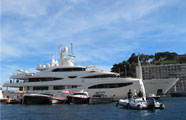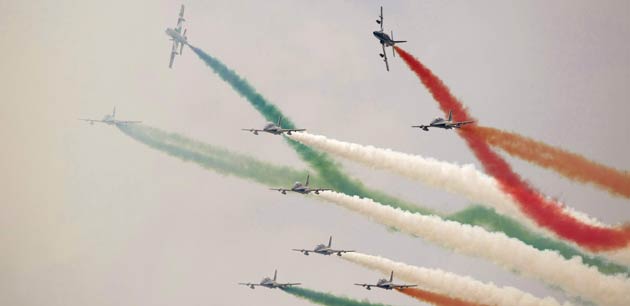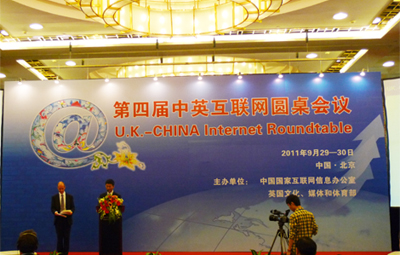Raising their spirits
Updated: 2011-09-30 09:18
By Hu Haiyan (China Daily)
|
|||||||||
|
|
Chinese white spirit makers are hoping baijiu, a traditional liquor, becomes loved around the world
Chinese white spirit makers are clinking glasses overseas in a bid to boost revenues, even as international brands are busy cobbling up alliances in China to get a toehold in the highly competitive baijiu market.
Though much of the overseas push has been triggered by the outbound moves of Chinese companies, they have also discovered that there is a growing demand in the West for Chinese culture and cuisine.
Mike Hudson from England is one of the new initiates to the baijiu culture. The 48-year-old salesman says baijiu is now his favorite tipple.
"When I was in London, I was used to the flavor of vodka or other strong liquor, like whiskey. Though I got a glimpse of baijiu in China Town, I never tried it, as I had not heard of it before," Mike says.
But his introduction to the fiery spirit came about on the innumerable banquets he attended during his frequent trips to China.
"It took me a long time to get used to the custom of drinking baijiu at a typical Chinese dinner. It often involved downing several shot glasses of baijiu to the accompanying chant of 'Ganbei!' (cheers)," he says.
"I developed a taste and liking for baijiu and later introduced it to several of my British friends. Most of them liked the flavor of the fiery white spirit," Mike says.
Riding on the demand created by new overseas customers like Mike and the booming domestic market, Chinese baijiu makers are now also being wooed by overseas companies for potential M&As and tie-ups.
The white spirits market in China is estimated to be in excess of 500 million 12-bottle cases and worth nearly $21.7 billion a year. In contrast, the market for international spirits in China is only around 4 million cases a year.
Moet Hennessy, the wine and spirit unit of French luxury product group LVMH, bought a controlling stake in white spirits maker Wenjun Distillery from Sichuan Jiannanchun Group Co Ltd in 2007.
Frederick Yip, president of Sichuan Wenjun Spirits Co Ltd, says the company is launching its products in Japan, South Korea and Australia apart from new destinations in Hong Kong and Macao this year.
Wenjun products are already available at major duty-free shops in the Asia-Pacific region through its LVMH association, Yip says.
"We will develop overseas distribution channels in the next one-and-half years and increase sales by 60 percent this year," he says, adding that the company will make inroads in the United States and European markets at a later date.
"Unlike vodka or other liquor brands, China's baijiu is not yet high-profile. But we are confident that it will gain more recognition overseas due to the growing popularity of Chinese culture and food," Yip says.
With Moet Hennessy as its major shareholder, Wenjun is better off than other companies in global moves. Yip says that the management standards of Wenjun have improved considerably after introducing Moet Hennessy's management philosophy.
Wuliangye Group, a leading Chinese white liquor maker, is advertising its brand on an electronic billboard in Time Square New York at an estimated cost of $400,000 per month.
The high advertisement fees paid by Wuliangye Group reflect Chinese white liquor makers' keenness in gaining international recognition, analysts say.
Yuan Renguo, general manager and board chairman of white spirit maker China Kweichow Moutai Distillery Co Ltd, says his company plans to promote Moutai in the US, Canada and Australia aggressively over the next five years.
London-based liquor giant Diageo Plc, the maker of Johnnie Walker whisky and Smirnoff vodka, got approval in June this year to increase its stake in Sichuan Shui Jing Fang, China's fourth-largest white spirits group. Diageo has indicated that it will boost overseas sales of the Chinese brand to nearly 1,000 tons over the next five to 10 years.
Shui Jing Fang's overseas sales, which accounted for 10 percent of its total sales in 2010, has nearly doubled in the past two years, say Diageo sources.
But the culture of drinking baijiu is still uncommon in many Western countries, something that may restrict business growth for companies.
According to Zhou Siran, a food industry analyst with CIC, baijiu awareness outside China is still nascent because of the different drinking and consumption habits of foreign customers.
For instance, the overseas sales of Wuliangye Group is about 1.81 percent of the total sales in 2010, while Moutai's exports accounted for nearly 3.51 percent of Kweichow's total sales last year.
"It is important for companies to spread awareness about baijiu and its cultural influence before jumping on the global bandwagon. Without this, it would be difficult to create strong international brands," he says.
Tong Xun, chief food and drink industries analyst with the Shenyin Wanguo Securities, feels that though baijiu is an important part of China's catering culture, it is rare to see the white spirit at foreign banquets.
Tong, however, is optimistic that things will change as institutions, such as the Confucius Institute, are now promoting Chinese culture across the world aggressively.
"But there is still a lot that needs to be done. Domestic baijiu producers need to invest more in developing distribution channels, sprucing up brand images and using stylish and eye catching packaging techniques," Tong says.
Wang Yongfeng, a food and drink industries analyst with Minsheng Security, says the domestic market will continue to be the major draw for companies.
"China's baijiu market is growing rapidly. According to the National Bureau of Statistics, between January to July this year, the revenue of China's baijiu market was 197.58 billion yuan, a year-on-year increase of 36.85 percent.
In the last five years, the profits of the industry have grown by nearly 50 percent on average," Wang says.
It is this strong profit potential and huge market that is luring foreign companies, he says.
"Though the overseas moves have been quite small, such steps help domestic consumers create high-end images, which translate into more popularity and revenue in China," Wang says.










